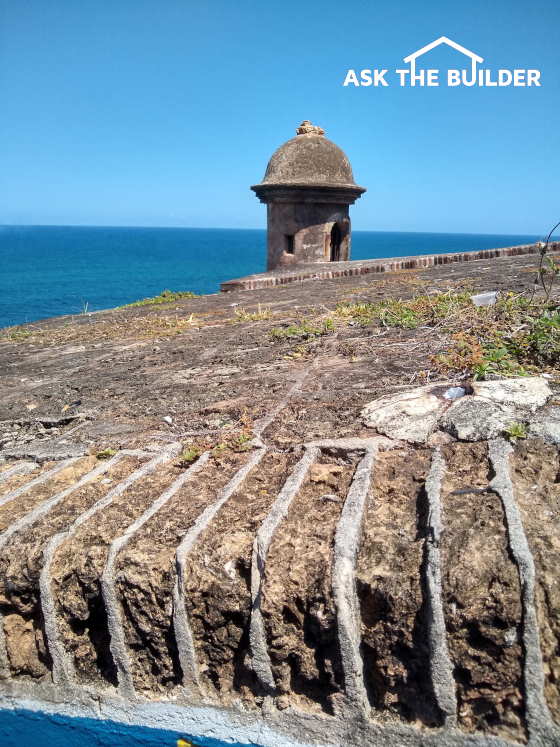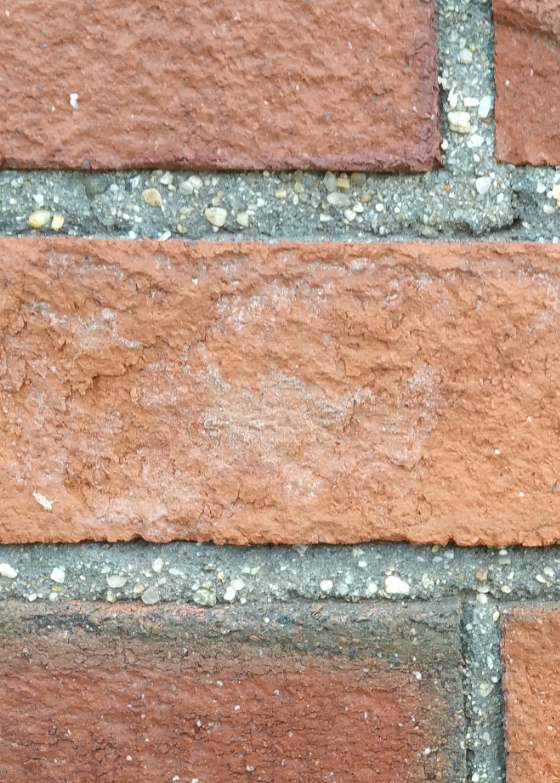Brick Mortar for the Ages

Brick Mortar for the Ages | How old do you think this mortar is between the brick? Note how it’s lasted longer than the brick! One hundred and fifty years? You better take another guess. (C) Copyright 2019 Tim Carter
Brick Mortar
DEAR TIM: I’m about to undertake a complex project. I’ve got an older brick home that’s over one hundred years old. There are places where the mortar needs attention. The bigger issue is a room addition we’ve got planned. Believe it or not, we located a brick that’s, for all intents and purposes, a perfect match. How do we match the mortar and more importantly how do we mix the mortar so it lasts as long as the original mortar? Most of the contractors we’ve talked to seem to be clueless. Christine P., Indianapolis, IN
I’m willing to bet that you’ve looked at hundreds, no thousands, of brick buildings of all types and not given two hoots about the mortar holding everything together. That’s okay, you don’t have to beat yourself up about it. I once was a brick and mortar grasshopper.
Fortunately, I cut my construction teeth in Cincinnati, Ohio working on many older houses. I also had the very good fortune to meet Paul Collins who was one of the smartest people I ever met when it comes to all things brick and mortar.
Paul was a belt and suspenders type of guy. He was at least thirty years older than I was and had his own brick sales company. Paul was kind enough to spend lots of time with me early in my career sharing information that had for years been passed down verbally. Sure, there was the Brick Industry Association, but Paul’s information was from down in the trenches where the warfare is fierce and knowledge is won one job at a time.
Christine has no idea how lucky she is to have found a matching brick after all those years. I’d recommend she buy a handful of lottery tickets while her good luck holds out. Who knows what other prizes she may win?
Brick is made from clay and clay is a natural material that has infinite color variability. The clay deposit Christine’s brick came from could have been exhausted decades ago. The kiln temperature for her new brick could have varied and even though it was the right clay, the color of the finished brick could have come out different.
My advice to you if you’re ever building a new home is to think about a future room addition and buy the brick for it at the same time you build. I know this sounds like a hair-brained idea, but you’ll never regret doing it. Brick is easy to store and it won’t deteriorate if you just put a cover on top of it should you live in a climate that gets freezing weather.
What is Brick Mortar?
Here’s what Paul taught me about brick mortar. The mortar of old, that used on just about every project in the 1800s and early 1900s here in the USA, was made with just hydrated lime and sand. Modern mortars tend to have a Portland-cement component and not so much hydrated lime.
Hydrated lime is an amazing material. As crazy as this sounds, it's powdered limestone. You know how durable that is, right? Think of all the national monuments and government buildings made from blocks of limestone. When you add water to hydrated lime, it reforms into limestone.
Just one month ago, I was in Puerto Rico and had the good fortune to visit a large Catholic church that was being restored. I talked with the masonry foreman for a short time asking him about what they were using for both the brick and stucco restoration.
His answer was simple, “We just use hydrated lime. It can last for centuries, especially here in Puerto Rico where we don’t get freezing weather.” He did say the stucco on the front of the church did have some white Portland cement added to it to make it more durable for people touching the walls.
Matching mortar takes lots of patience. It’s important to realize that you need to match the sand in the old mortar when you’re repairing mortar or trying to match up mortar for a room addition.
Not all sand is the same. Look very closely at a weathered brick mortar and you’ll see that not only are the grains of sand different sizes, but they’re also often different colors. Remember, sand is nothing more than very tiny pieces of rock. Sand is to ants what boulders are to us!

You can clearly see the colored sand grains in this high-resolution photo. Photo credit: Richard K.
You need to visit several nearby gravel pits that sell sand to try to locate sand that matches what’s in your current mortar. This requires diligence, determination, and discipline. It will be rewarded if you find the correct sand. Use a 10X magnifier to really get a feel for what your sand looks like before you go. If you have a smartphone that can take close up photos, snap a shot of your mortar so you can see the colors and relative sizes of the grains of sand.
It would be very wise for you to take your time and do a small test panel before you install the brick on the room addition. Lay up a tiny brick wall that’s maybe a foot tall by two feet long. Allow the mortar to cure. Remember the sand particles are going to be covered with the lime paste so the mortar will dry with a uniform color and look nothing like your 100-year-old mortar.
This paste wore off your existing home’s mortar decades ago which is why you can see the individual grains of sand now. After a month, do a very light acid wash on the test panel to dissolve the lime paste on the sand. You should be happy with the results if you invested the time to get the right sand.
This column was SO GOOD that I shared with the 31,000 subscribers who read my November 17, 2019 AsktheBuilder Newsletter.
Column 1328
2 Responses to Brick Mortar for the Ages